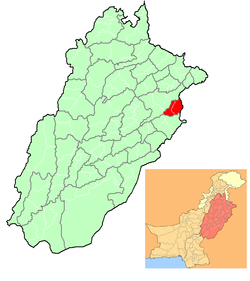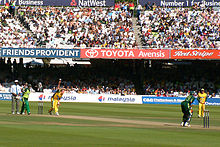Lahore
This article is about the city of Lahore. For other uses, see Lahore (disambiguation).
لاہور, Punjabi: لہور; pronounced [laːˈɦɔːr] ( listen)) is the capital of the Pakistani province of Punjab and the second largest city in Pakistan, after Karachi. The city lies along the Ravi River, situated approximately 25 kilometres (16 mi) from the Wagah border crossing and is 32 kilometres (20 mi) from the Indian city of Amritsar.Historically, Lahore has been a center of cultural heritage for many civilizations. It successively served as regional capital of the empires of the Shahi kingdoms in the 11th century, the Ghaznavids in the 12th century, the Ghurid State in the 12th and 13th century, the Mughal Empire in the 16th century, the Sikh Empire in the early 19th century, and it was the capital of the Punjab region under the British Raj in the mid 19th and early 20th century. The traditional capital of Punjab for a thousand years, Lahore was the cultural center of the northern Indian subcontinent extending from Peshawar to New Delhi. Mughal structures such as the Badshahi Mosque, the Lahore Fort, Shalimar Gardens, and the mausolea of Jehangir and Nur Jehan are popular tourist attractions for the city. Lahore is also home to many British colonial structures built in the Mughal-Gothic style, such as the Lahore High Court, the General Post Office, Lahore Museum and many older universities including the University of the Punjab. The Lahore Zoo, world's third oldest zoo, is also situated here.














